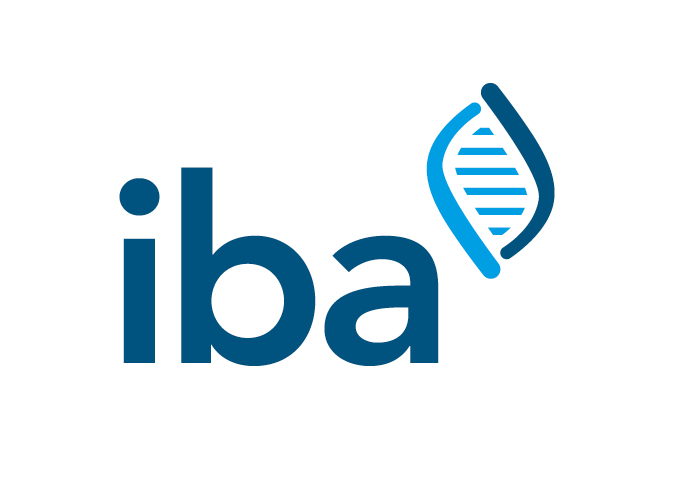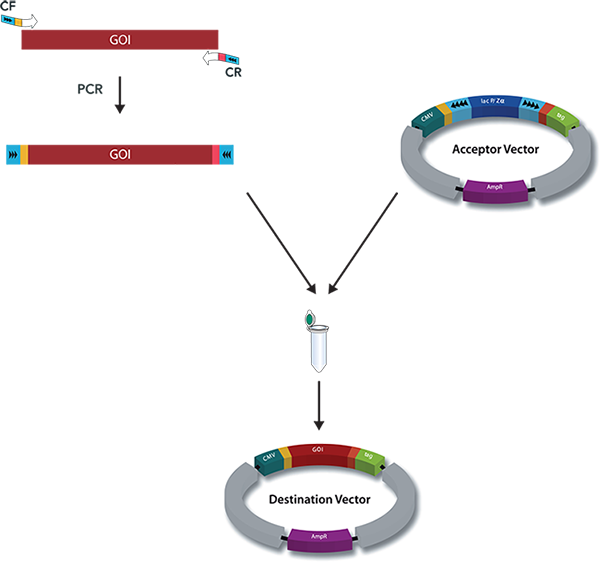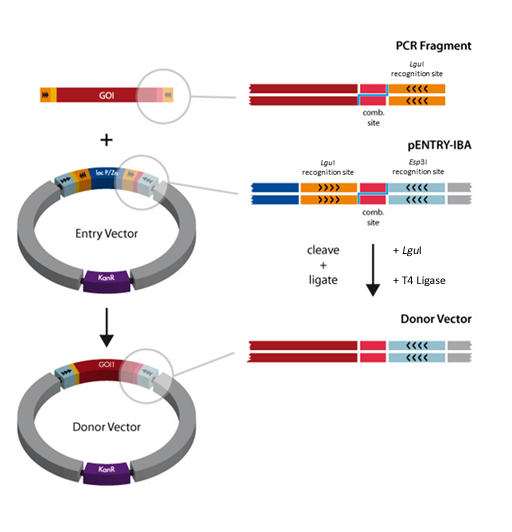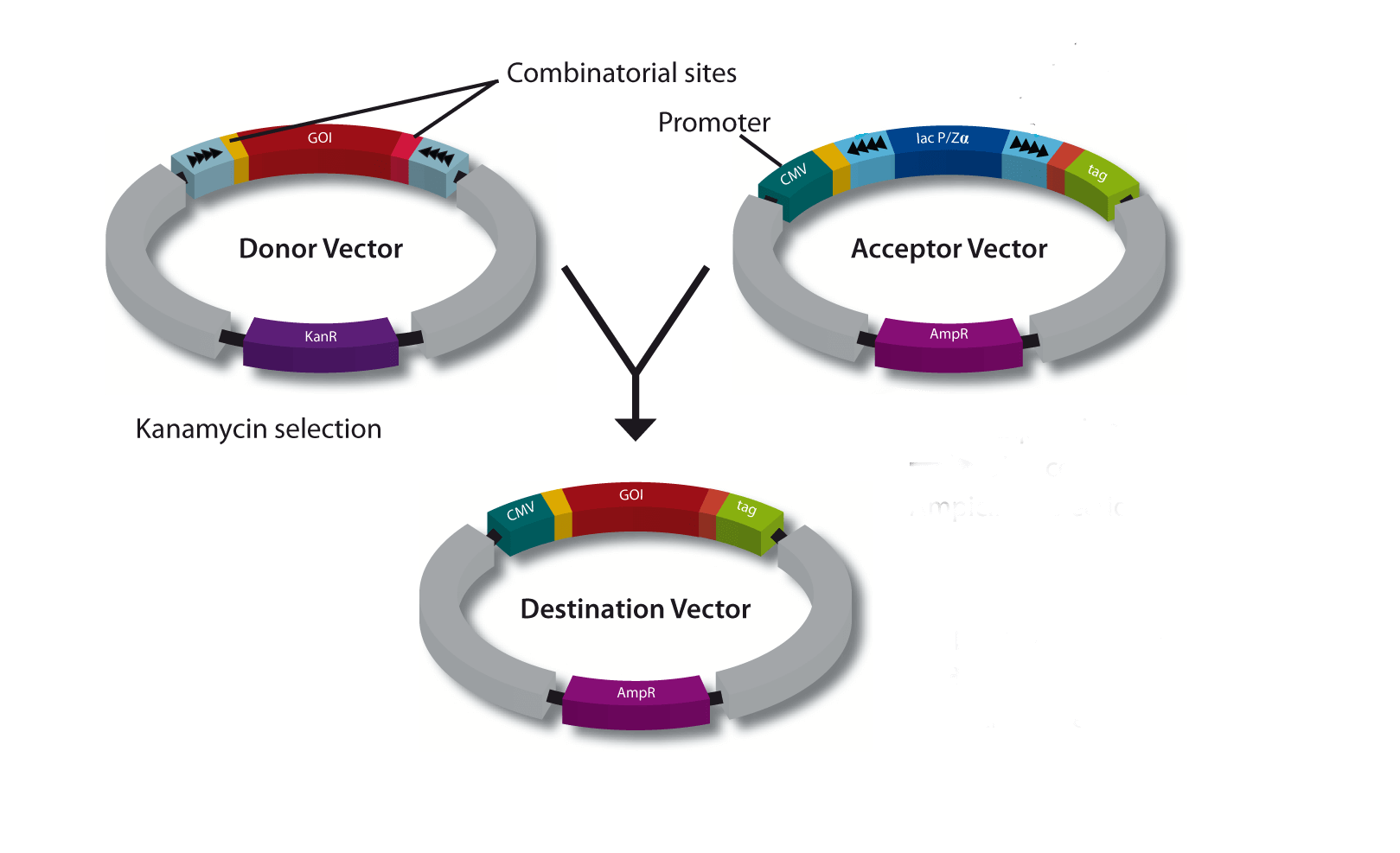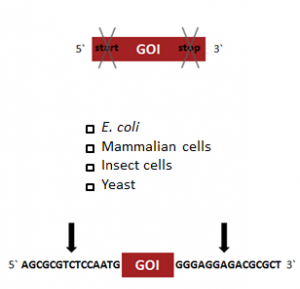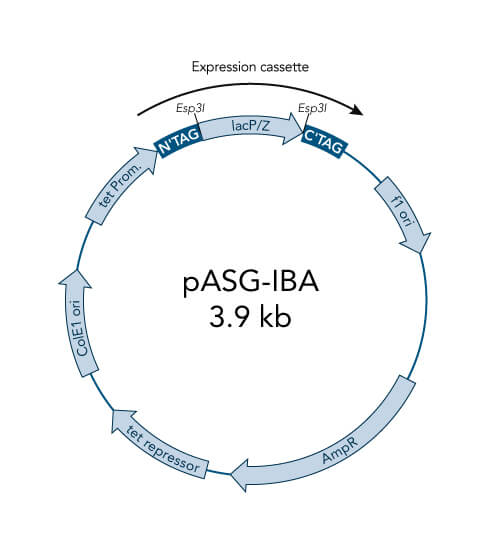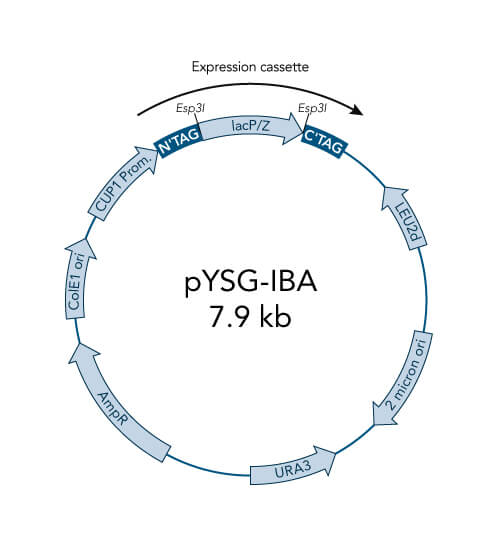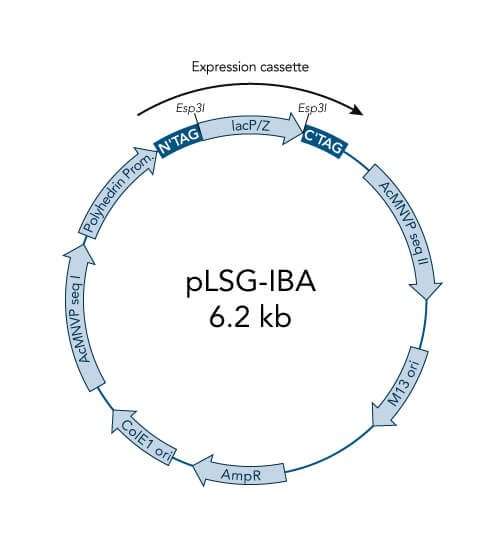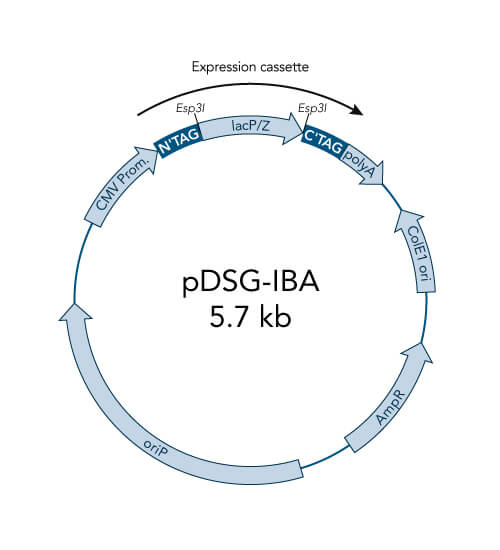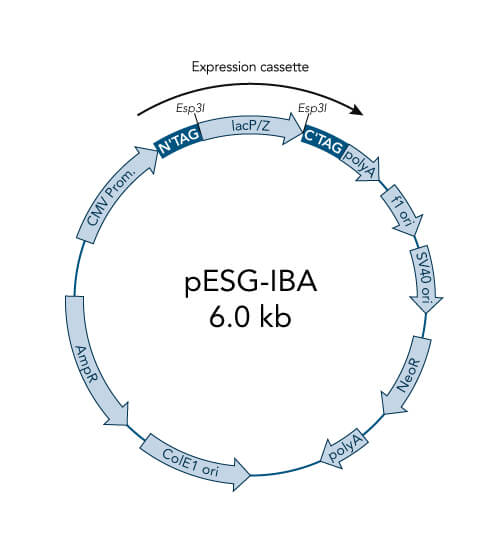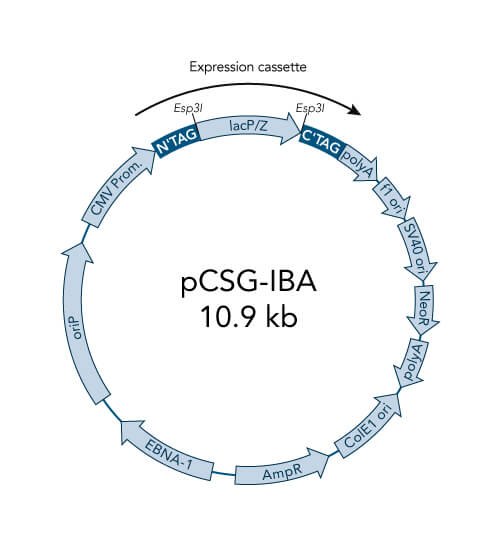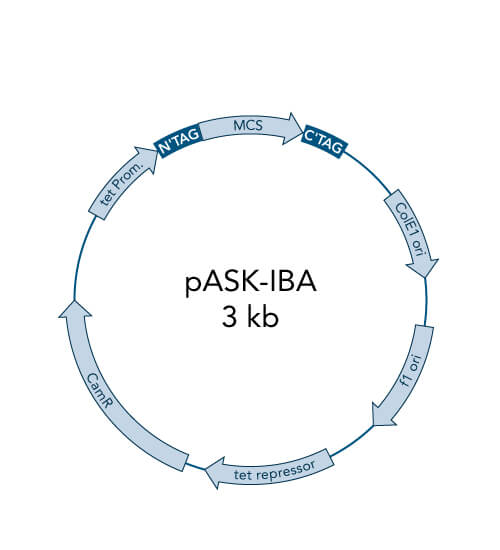As a consequence, special E. coli strains or extra plasmids are not required and a broad range of culture media and conditions can be used. For example, glucose minimal media and even the XL1-Blue bacterial strain, which carries an episomal copy of the tetracycline resistance gene, can be used for expression. The pASK-IBA expression system is stable under many conditions, including fermentation, and is easy-to-handle.
Further elements of the vectors are a tandem ribosome binding site (RBS) which ensures efficient initiation of translation, the strong terminator of the lipoprotein gene in order to prevent read-through, the intergenic region of the bacteriophage f1 which provides a means for preparing ssDNA and a b-lactamase or chloramphenicol acetyl transferase gene*. The vectors do not mediate resistance against tetracycline.
*Using cloning vectors with b-lactamase resistance gene may be associated with some limitations since ampicillin is degraded quite fast in bacterial culture medium. Therefore, we are now offering our Strep-tag® II vectors pASK-IBA2C to pASK-IBA7C with chloramphenicol resistance instead of ampicillin resistance.
Reference: Skerra, A. (1994). Use of the tetracycline promoter for the tightly regulated production of a murine antibody fragment in Escherichia coli. Gene, 151, 131-135.
